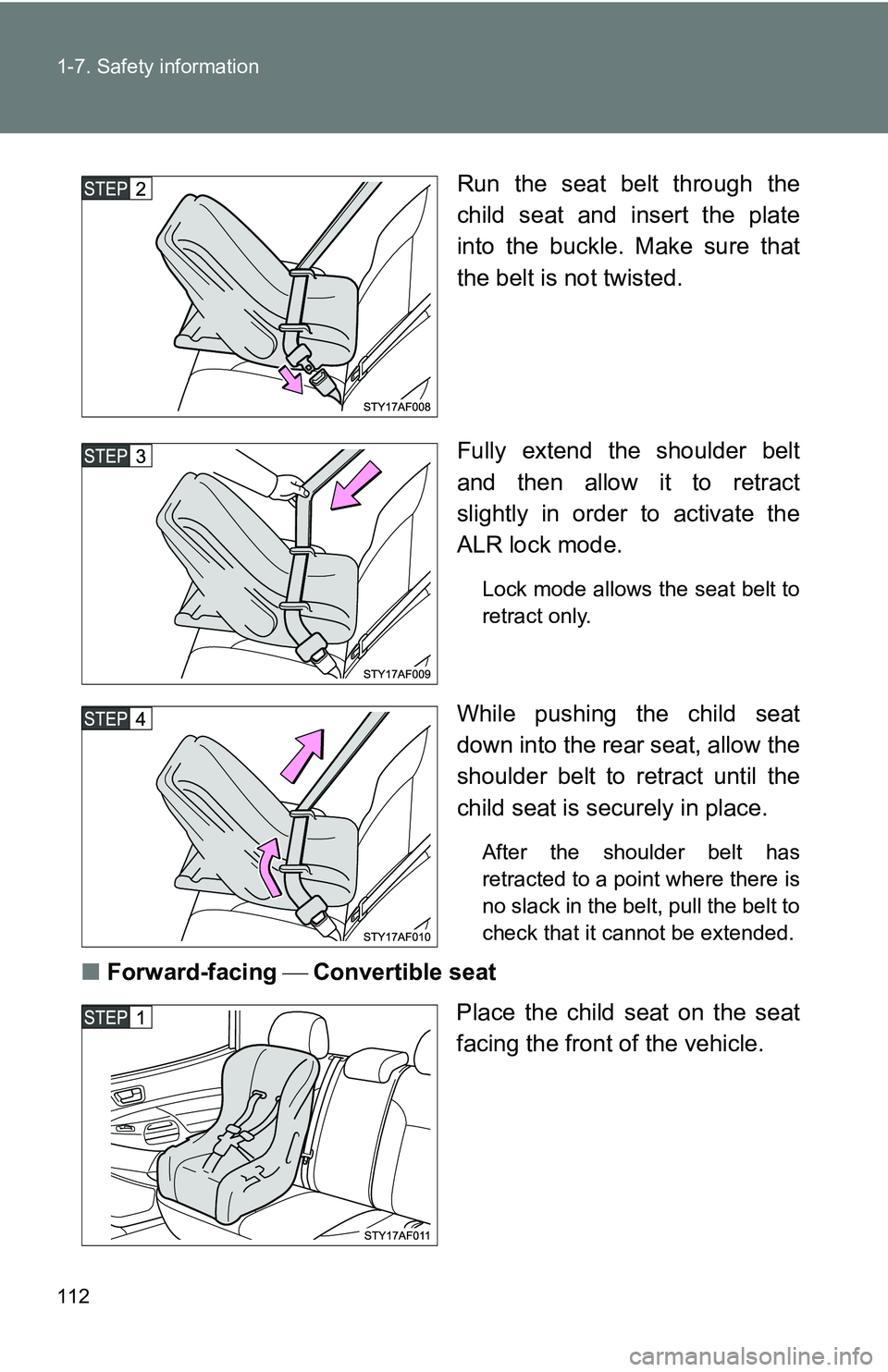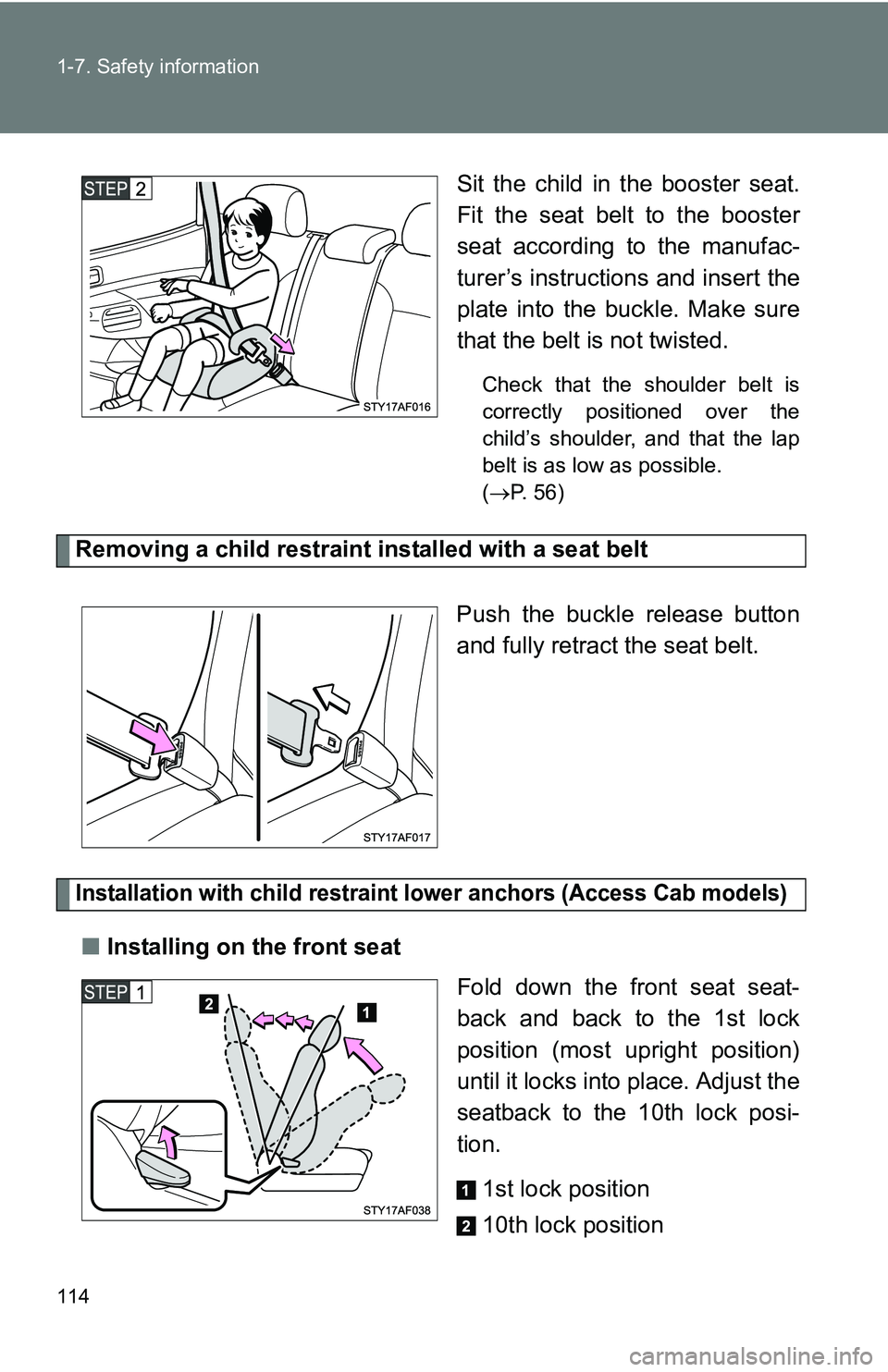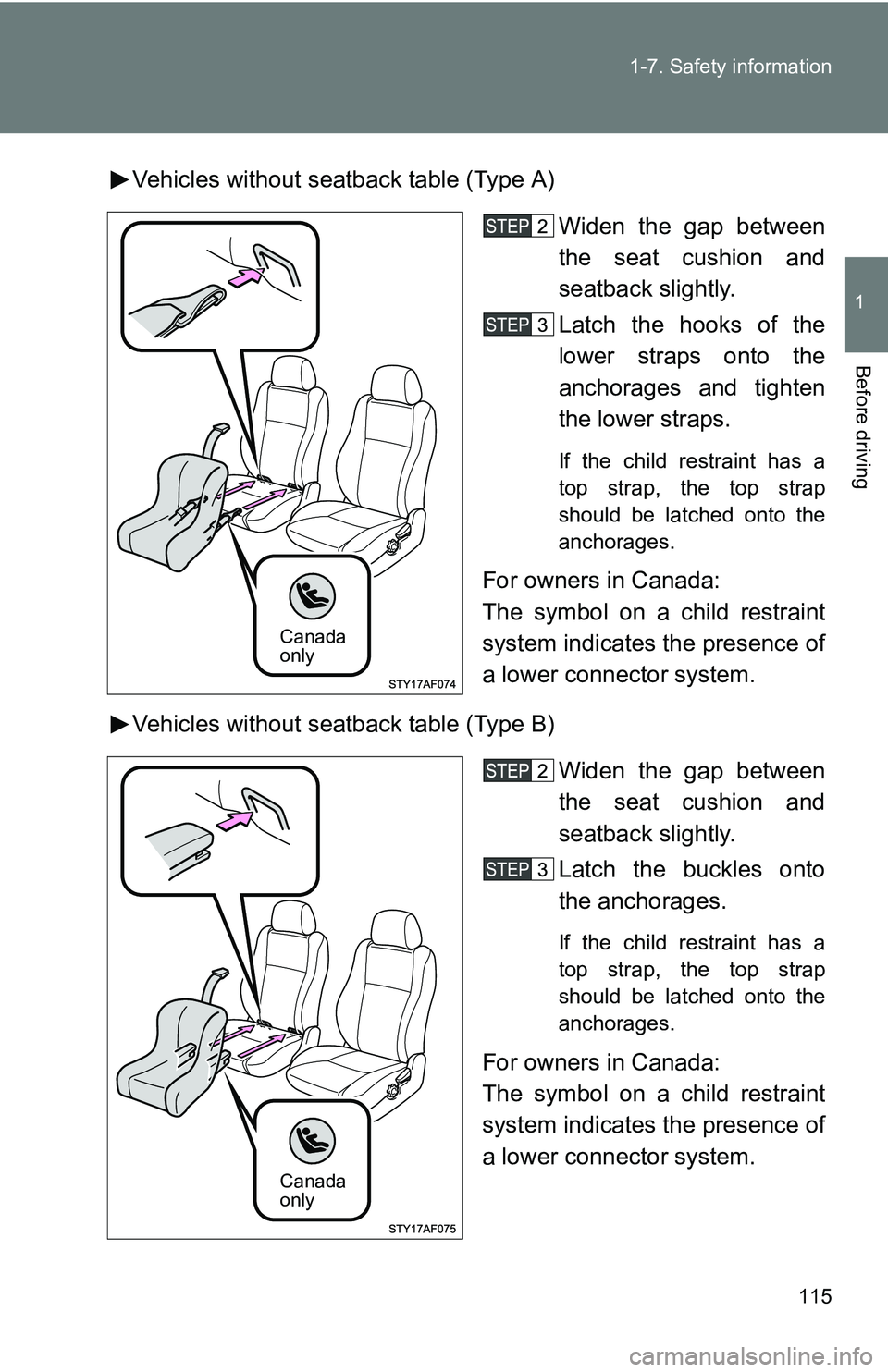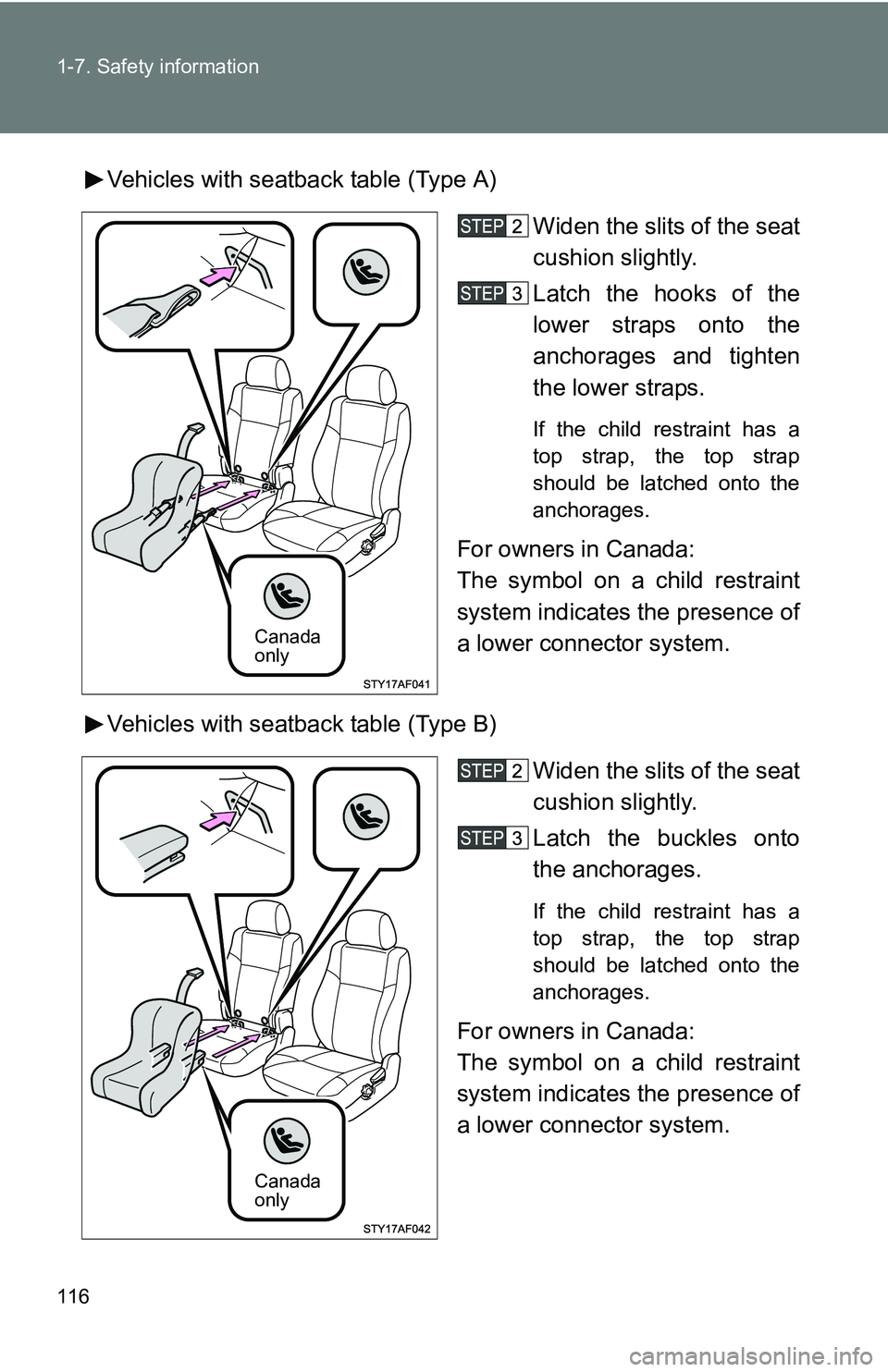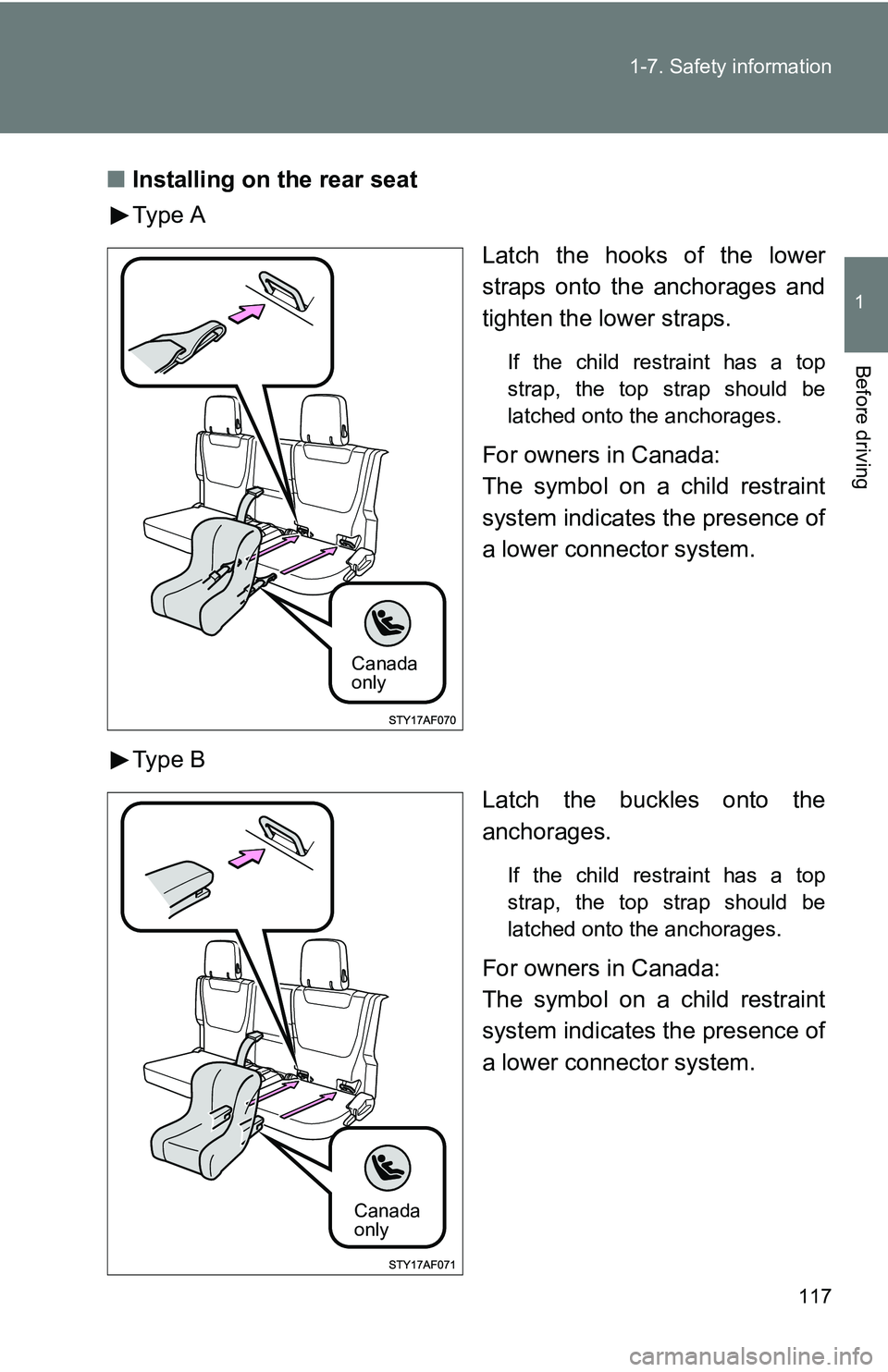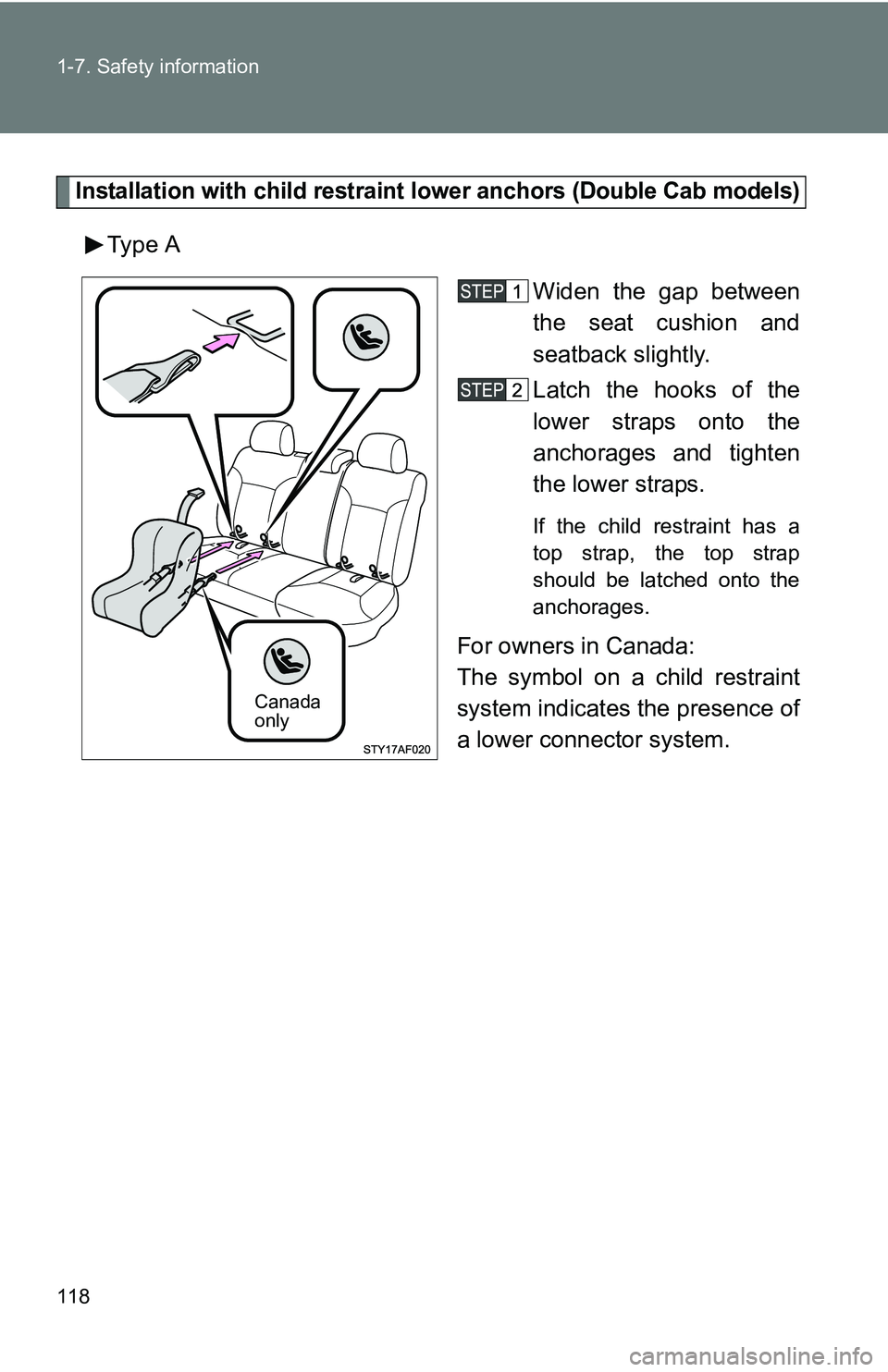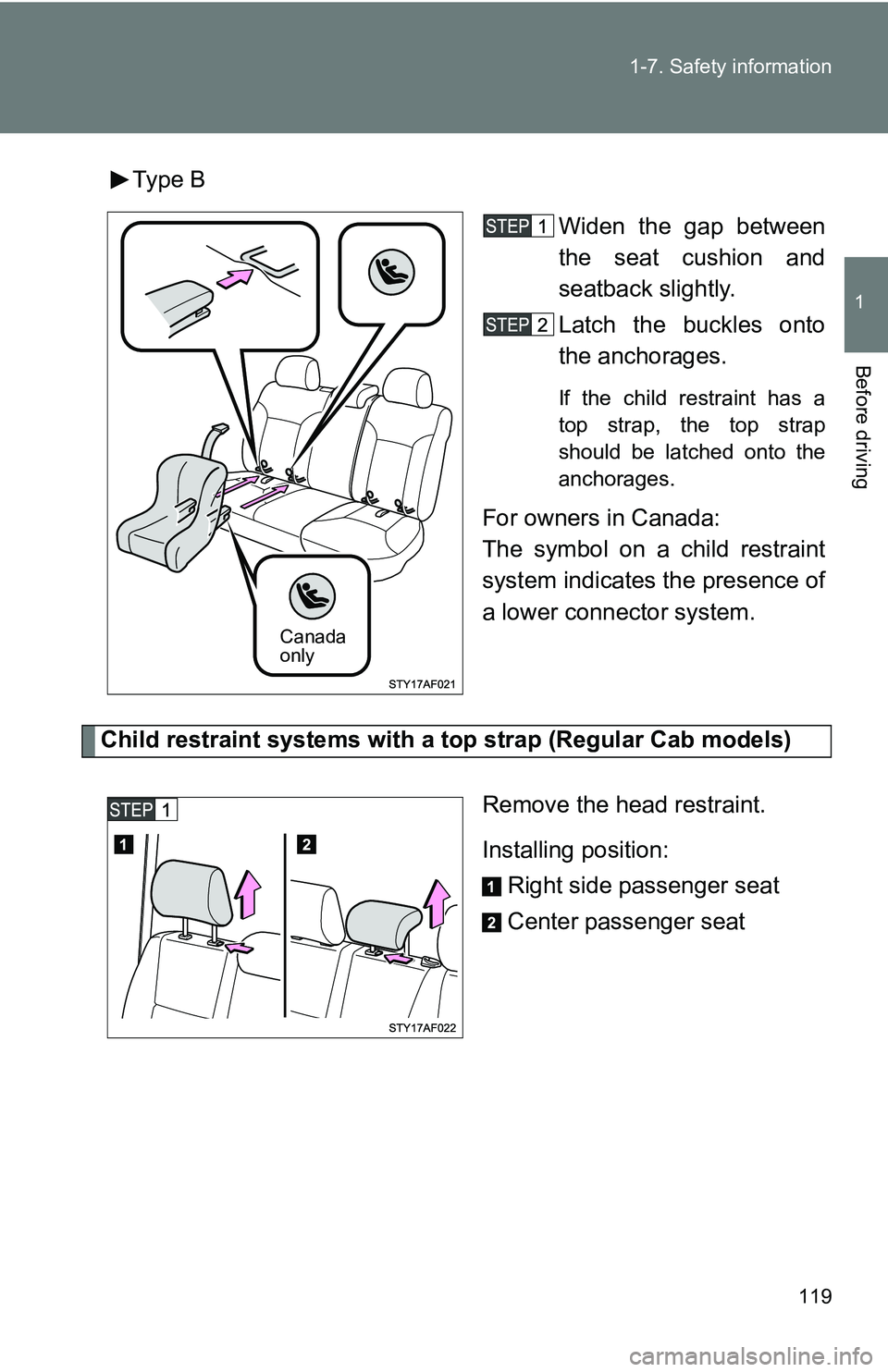TOYOTA TACOMA 2009 Owners Manual (in English)
TACOMA 2009
TOYOTA
TOYOTA
https://www.carmanualsonline.info/img/14/42940/w960_42940-0.png
TOYOTA TACOMA 2009 Owners Manual (in English)
Trending: gas type, automatic transmission fluid, wheel, immobilizer, torque, radio, cooling
Page 111 of 520
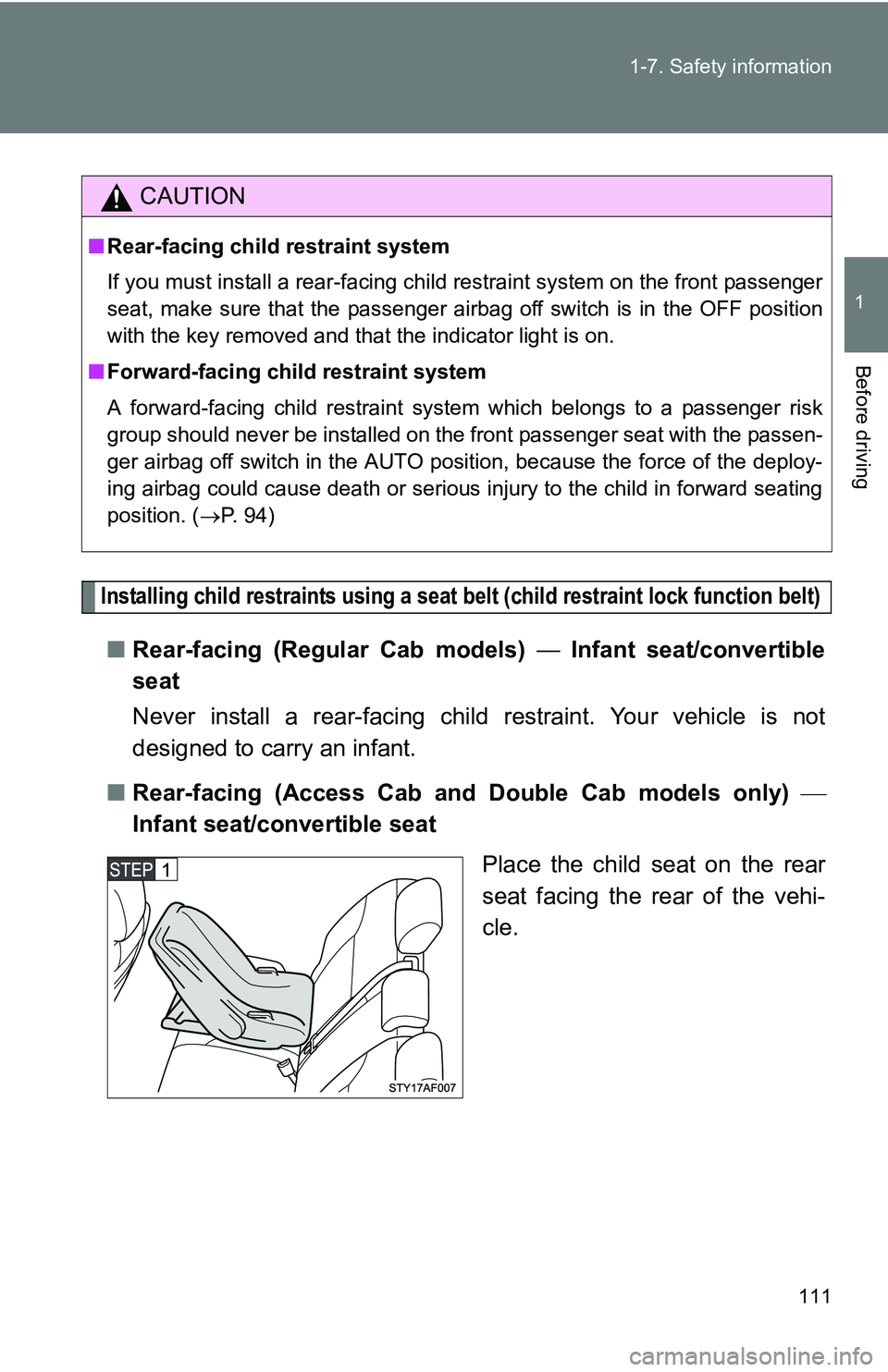
111
1-7. Safety information
1
Before driving
Installing child restraints using a seat belt (child restraint lock function belt)
■
Rear-facing (Regular Cab models) — Infant seat/convertible
seat
Never install a rear-facing child restraint. Your vehicle is not
designed to carry an infant.
■ Rear-facing (Access Cab a nd Double Cab models only)
Infant seat/convertible seat
Place the child seat on the rear
seat facing the rear of the vehi-
cle.
CAUTION
■Rear-facing child restraint system
If you must install a rear-facing child restraint system on the front passenger
seat, make sure that the passenger airbag off switch is in the OFF position
with the key removed and that the indicator light is on.
■ Forward-facing child restraint system
A forward-facing child restraint system which belongs to a passenger risk
group should never be installed on the front passenger seat with the passen-
ger airbag off switch in the AUTO position, because the force of the deploy-
ing airbag could cause death or serious injury to the child in forward seating
position. ( P. 94)
Page 112 of 520
112 1-7. Safety information
Run the seat belt through the
child seat and insert the plate
into the buckle. Make sure that
the belt is not twisted.
Fully extend the shoulder belt
and then allow it to retract
slightly in order to activate the
ALR lock mode.
Lock mode allows the seat belt to
retract only.
While pushing the child seat
down into the rear seat, allow the
shoulder belt to retract until the
child seat is securely in place.
After the shoulder belt has
retracted to a point where there is
no slack in the belt, pull the belt to
check that it cannot be extended.
■Forward-facing Convertible seat
Place the child seat on the seat
facing the front of the vehicle.
Page 113 of 520
113
1-7. Safety information
1
Before driving
Run the seat belt through the
child seat and insert the plate
into the buckle. Make sure that
the belt is not twisted.
Fully extend the shoulder belt
and then allow it to retract
slightly in order to activate the
ALR lock mode.
Lock mode allows the seat belt to
retract only.
While pushing the child seat into
the rear seat, allow the shoulder
belt to retract until the child seat
is securely in place.
After the shoulder belt has
retracted to a point where there is
no slack in the belt, pull the belt to
check that it cannot be extended
■
Booster seat
Place the booster seat on the
seat facing the front of the vehi-
cle.
Page 114 of 520
114 1-7. Safety information
Sit the child in the booster seat.
Fit the seat belt to the booster
seat according to the manufac-
turer’s instructions and insert the
plate into the buckle. Make sure
that the belt is not twisted.
Check that the shoulder belt is
correctly positioned over the
child’s shoulder, and that the lap
belt is as low as possible.
( P. 56)
Removing a child restraint installed with a seat belt
Push the buckle release button
and fully retract the seat belt.
Installation with child restraint lower anchors (Access Cab models)
■Installing on the front seat
Fold down the front seat seat-
back and back to the 1st lock
position (most upright position)
until it locks into place. Adjust the
seatback to the 10th lock posi-
tion.
1st lock position
10th lock position
Page 115 of 520
115
1-7. Safety information
1
Before driving
Vehicles without seatback table (Type A)
Widen the gap between
the seat cushion and
seatback slightly.
Latch the hooks of the
lower straps onto the
anchorages and tighten
the lower straps.
If the child restraint has a
top strap, the top strap
should be latched onto the
anchorages.
For owners in Canada:
The symbol on a child restraint
system indicates the presence of
a lower connector system.
Vehicles without seatback table (Type B) Widen the gap between
the seat cushion and
seatback slightly.
Latch the buckles onto
the anchorages.
If the child restraint has a
top strap, the top strap
should be latched onto the
anchorages.
For owners in Canada:
The symbol on a child restraint
system indicates the presence of
a lower connector system.
Canada
only
Canada
only
Page 116 of 520
116 1-7. Safety information
Vehicles with seatback table (Type A)Widen the slits of the seat
cushion slightly.
Latch the hooks of the
lower straps onto the
anchorages and tighten
the lower straps.
If the child restraint has a
top strap, the top strap
should be latched onto the
anchorages.
For owners in Canada:
The symbol on a child restraint
system indicates the presence of
a lower connector system.
Vehicles with seatback table (Type B) Widen the slits of the seat
cushion slightly.
Latch the buckles onto
the anchorages.
If the child restraint has a
top strap, the top strap
should be latched onto the
anchorages.
For owners in Canada:
The symbol on a child restraint
system indicates the presence of
a lower connector system.
Canada
only
Canada
only
Page 117 of 520
117
1-7. Safety information
1
Before driving
■
Installing on the rear seat
Type A
Latch the hooks of the lower
straps onto the anchorages and
tighten the lower straps.
If the child restraint has a top
strap, the top strap should be
latched onto the anchorages.
For owners in Canada:
The symbol on a child restraint
system indicates the presence of
a lower connector system.
Type B Latch the buckles onto the
anchorages.
If the child restraint has a top
strap, the top strap should be
latched onto the anchorages.
For owners in Canada:
The symbol on a child restraint
system indicates the presence of
a lower connector system.
Canada
only
Canada
only
Page 118 of 520
118 1-7. Safety information
Installation with child restraint lower anchors (Double Cab models)
Type AWiden the gap between
the seat cushion and
seatback slightly.
Latch the hooks of the
lower straps onto the
anchorages and tighten
the lower straps.
If the child restraint has a
top strap, the top strap
should be latched onto the
anchorages.
For owners in Canada:
The symbol on a child restraint
system indicates the presence of
a lower connector system.
Canada
only
Page 119 of 520
119
1-7. Safety information
1
Before driving
Type B
Widen the gap between
the seat cushion and
seatback slightly.
Latch the buckles onto
the anchorages.
If the child restraint has a
top strap, the top strap
should be latched onto the
anchorages.
For owners in Canada:
The symbol on a child restraint
system indicates the presence of
a lower connector system.
Child restraint systems with a top strap (Regular Cab models)
Remove the head restraint.
Installing position:Right side passenger seat
Center passenger seat
Canada
only
Page 120 of 520
120 1-7. Safety information
Swing the seatback forward
slightly (P. 46) and remove the
anchor bracket covers.
Installing position:
Right side passenger seat
Center passenger seat
Store the removed cover in a safe
place such as the glove box.
Right side passenger seat
Route the top strap through
the routing device as shown in
the illustration.
Make sure the top strap is not
twisted.
Latch the hook onto the
anchor bracket.
Return the seatback to its orig-
inal position.
Make sure the seatback is
securely locked by pushing for-
ward and rearward on the top of
the seatback.
Trending: stop start, child seat, ground clearance, fuel, snow chains, ad blue, remote control

